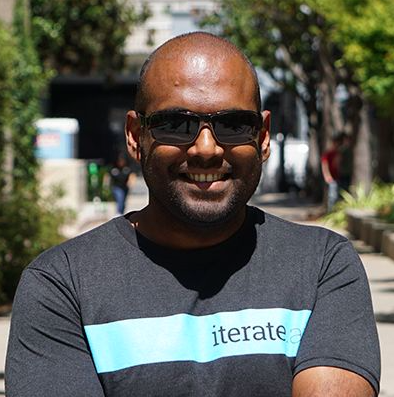
School shooting : The Mental Toll
School shooting impose long-term detrimental effects on the communities where they occur. Mental health suffers, surviving students fail to thrive to their potential, and the overall community endures long-term economic costs.
As a country, we are all suffering mentally to some degree. A majority of teens say they worry about a school shooting. This fear is linked to elevated anxiety levels among students, and many students under treatment admit that they are on high alert, constantly planning their escape route if violence breaks out in public. So it’s no surprise that 75% of young people and a majority of adults said that the anticipation of a mass shooting was a significant source of stress for them.
School no longer feels like a safe place. It’s hard for students to focus on getting a strong education when this fear is so prevalent. For this reason, there has also been a spike of 21% in prescriptions for antidepressants among youth within a 5-mile radius of a school shooting. Researchers at Yale University conducted a wider review of studies that followed shootings and found that other psychiatric conditions increase: anxiety disorders, panic attacks, substance abuse disorders, phobias, and other issues. Researchers admit that data is incomplete due to underreporting or poor tracking—the actual scope of problems could be much much worse.
Communities, where a shooting occurs, can also suffer from an increased rate of post-traumatic stress disorder (PTSD). When people typically hear the term PTSD, a common association are veterans. Researchers tracked 136 survivors of a shooting in Killeen TX, and found that 20% of the men and 36% of the women met the criteria for PTSD.
A third of adults now say they avoid certain places and events as a result of their fear of mass shootings. Mass shootings account for only 1% of shooting deaths in the US, but the impact in the public consciousness is much greater. The frequency of mass shootings, combined with the near-constant and ubiquitous media connectivity combine accumulating exposure to the stress of potential shootings. It’s not just the adults. According to a Stanford study published in June 2022, high school students that are exposed to school shootings are 3.7% less likely to graduate, 9.5% less likely to enroll in college, and 15.3% less likely to complete a bachelor’s degree before age 26. This is partially due to the fact that students exposed to school shootings are more likely to be chronically absent and to be held back a grade in the two years following the shooting. This lack of attendance is also linked to long-term harm to graduation rates and college enrollment rates.
The Economic Impact
The PBS investigation program “Newshour” found that the aggregate cost of school gun violence in not having those students grow up and lead lives is nearly $5.8 Billion.
Over a more extended period into adulthood, students in grades 9-11 who were exposed to school shootings are 6.3% less likely to be employed and have a 13.5% lower average annual earnings when they are 24-26 years. Each student exposed to a shooting could expect to earn $115,550 less throughout their lifetime. Roll those individual impacts out to the approximately 50,000 students who have been exposed, and the aggregate loss totals up to the $5.8 Billion mentioned above.
When a supermarket in Buffalo, NY suffered a mass shooting, the city budget was saddled with $500,000 in unanticipated and unbudgeted costs for first responder overtime and other city services. The impact is far worse when an entire small town unravels due to a mass shooting—the economic fallout from the Uvalde shooting is estimated at $244 Million, according to a report to the US House of Representatives. Additional economic impacts include reduced economic growth, home appreciation values are slower, and there are fewer new jobs in the areas.
School Shooting : Can Technology Help?
Confronting this enormous challenge has spurred some to look for technological solutions. Artificial Intelligence (AI) may hold some promise. As image recognition AI becomes exposed to more and more photos and videos, the pattern and object recognition algorithms get “smarter”, especially as the AI is trained to look for specific objects. In this case, AI can be trained to recognize weapons: guns, rifles, knives, and tactical vests. These AI monitors can be connected to existing security cameras, providing an unblinking and unwavering eye for weapons. Current accuracy is already above 90% and will improve with time.
“Our team took 25,000 images of weapon usage and identified the weapons in each scene, used computers to generate an additional 40,000 images, and then used these identifications to train an image AI to “see” the weapons. Identification can occur in as little as 30 milliseconds,” said Brian Sathianathan, co-founder and CTO of Iterate.ai. Alerts can be sent to onsite security officers and first responders. This technology has been deployed to hundreds of commercial locations and is now being piloted on school campuses and churches.
Security is best deployed in layers. AI threat awareness is not an absolute solution, but by accelerating the alert time, and by providing deeper, more accurate information to first responders, lives may be saved. AI can be used for the betterment of society.
Brian Sathianathan
Co-Founder and Chief Technology Officer of Iterate.ai
Brian started his career at Apple where he was initially hired for his software development and encryption skills. For 6 years at Apple, he led iPhone and Intel Mac initiatives within the very private New Product Introductions (a.k.a. Secret Products) Group. His two core groups designed the security and activation platform for the first iPhone, for which he holds patents. After 8 years total, Brian left Apple to be Founder/President of Avot Media, a software platform used by firms like Warner Bros to transcode video for Mobile. Avot was acquired by Smith Micro [NASDAQ: SMSI]. At Smith, Brian became head of the video business and was responsible for strategy, vision, and integration. After Avot and Smith, Brian joined the seed-stage investment team at Turner Media, where he sought out startups in the Social, Consumer, Advertising, and Recommendation spaces. Over two years, he participated in 13 investments and one acquisition (BleacherReport). Two of his startups were acquired (one by Apple) during that period. Brian is now the Co-Founder and Chief Technology/Digital Officer of Iterate.ai, an innovation ecosystem launched in 2013. Companies like Ulta Beauty, The Pampered Chef, Driven Brands, and Circle K leverage the “intelligent low-code” capabilities invented and patented by Brian and his team. Interplay dramatically speeds up and simplifies digital and AI-based innovation. Largely bootstrapped and highly capital efficient, Iterate revenues grew 287% from 2017 to 2020.
Dave Jenkins
Vice President, Digital Technology and Marketing of Iterate.ai
Dave Jenkins runs the marketing and technology curation practice for Iterate.ai. Having been a technologist for 20+ years, with exposure at all levels of deployment, he ran his own studio, was CTO at Backcountry.com just prior to their acquisition, managed professional services and consulting for Red Hat in EMEA and then APAC, directed online strategy for Caleres, and most recently grew a data visualization platform for Vision.Space. Dave is passionate about finding new technology and the unconventional solutions that technology can bring to a business.
Get the Real Story with Shale Magazine
At Shale Magazine, our sole mission is to look at the facts from an objective angle and report on current events that matter most to energy industry stakeholders. Actions like the Whitehouse unfairly characterizing oil and gas profits as “evil” while Texas plans to divest from ESG funds showcases where both sides certainly have a long way to go. Shale Magazine offers fresh insights into every issue by never shying away from a story and sticking with the facts. Make sure to check out our latest issues to stay in the know about all things energy. You’ll find great opportunities for networking and events, exclusive interviews and one-on-ones with top industry execs, and all the latest news from upstream, midstream, and downstream.


















